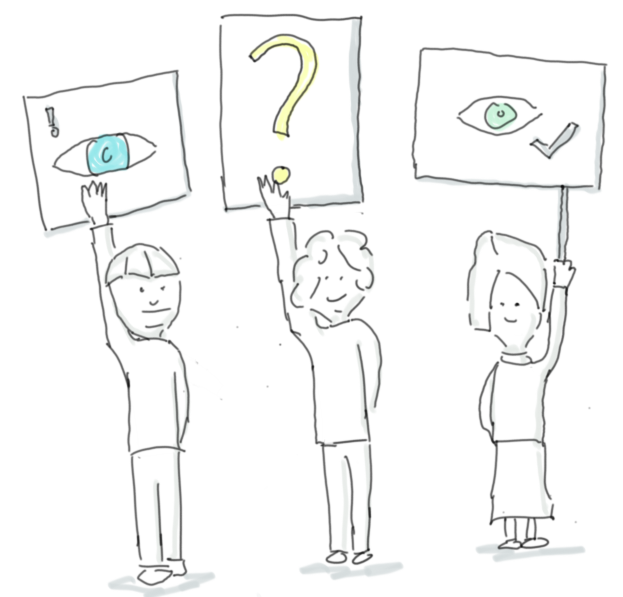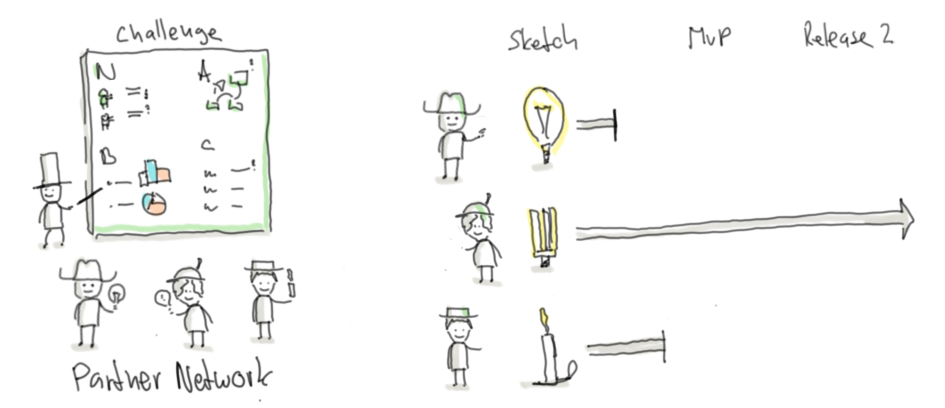At the recent Agile Unconference in Zürich I came across the concept of lean agile procurement. The key insight for me was: forget preparing RFPs, rather establish a good relationship with a select list of partners.

The story starts a couple of years ago when I was involved in the early phases of business process improvements at an insurance company here in Switzerland. We had some great ideas and innovative new ways how to move the business forward. We set forth as indicated by their procurement process and worked out more detailed concepts for those ideas we thought were the most promising ones so we could get green light from the upper management. Later we would prepare materials for the RFPs for the software packages we needed.
Alas, the bottleneck to implementing the business improvement were the IT department and their IT suppliers. They simply had too much on their plates. And the company was constantly preparing more and more ideas that involved IT. Most of these ideas were doomed from the beginning. What a waste of effort!
Given such a bottleneck, two obvious things were amiss: (1) there was no agreement on the innovation portfolio and which ideas to push forward and which to delay or cancel, and (2) IT suppliers were involved in accordance with the process – that is when a business concept was almost ready for an RFP – that is when all the business stakeholder were so fond of their wish lists that reality was most unwelcome.
The second issue is just what this article is about. Procurement processes usually demand an in-depth investigation of what the business needs before contacting potential suppliers. However, there is always a compromise to find between what business would like to have and what is possible today with the given constraints in regards to technology and resources. Accepting this compromise early on and in a creative way would allow a team to come up with great and innovative solutions that actually are feasible. Procurement processes based on today’s waterfall thinking create – as a rule of thumb – rather too much waste.

Lean agile procurement (LAP) from Mirko Kleiner (see the LAP webpage for detailed information and for the procurement canvas) is an interesting approach to make this process less wasteful. Rather than buying the cheapest solution from a supplier replying to the RFP, companies work primarily with partners.

The exact workings may be quite different for each initiative and the LAP website proposes some precise methodology that is worth having a look at. Still the basic pattern is probably quite universal:
- Once an initiative is identified, create a first hypothesis of the challenge the initiative should address and how worthwhile accepting this challenge is for the company.
- Based on the specific initiative, preselect the most promising partner from your partner network for a short list.
- Together with the partners, reflect on the need, the potential quick-wins, a more thorough solution and the costs of accepting the challenge. I expect this to be a very creative and intense workshop with each of the partners from the short list. At the end, the challenge should be much clearer, you should have some alternative solution sketches to choose from the partners and you should be able to understand which partner and which sketch is most suited for the initiative.
- Having gotten so far, you may now set aside an appropriate budget and setup a contract with your preferred partner. Obviously if you have difficulties deciding between two partners, you could let them compete for some time.
- With the final partner, you evolve the idea first to an MvP and from there to a more and more sophisticated solution.
There is a lot of promise in such an approach:
- Over time, you know your partners well and have a good understanding of how to work together. This reduces overhead, storming and basically speeds up the whole process.
- Focus on feasible stuff early: When shaping the solution, you and your partners can already trade off technological and resource constraints with business needs and start with solutions that are actually feasible. Again, this again boosts speed and reduces costs.
- Variants: Including more than one partner and together creating different solutions will quickly lead to several different alternatives to choose the most promising from.
I expect an approach like lean agile procurement and building up a network of capable partners will significantly reduce IT development costs and may even drastically speed up time to market. I’ve seen ample examples where it took more than 12 month up to the RFP, then 3 month to partner selection and then 6 month to implement. I would expect that you could probalbly have the whole thing done in less than 12 month using agile procurement, which is practically doubling the speed.
Lets see what practice has to say and whether such a promise can be realized.